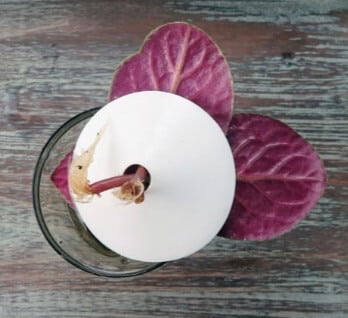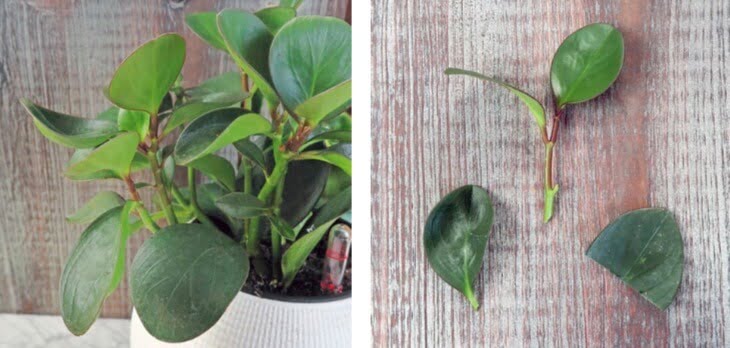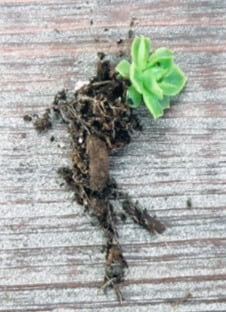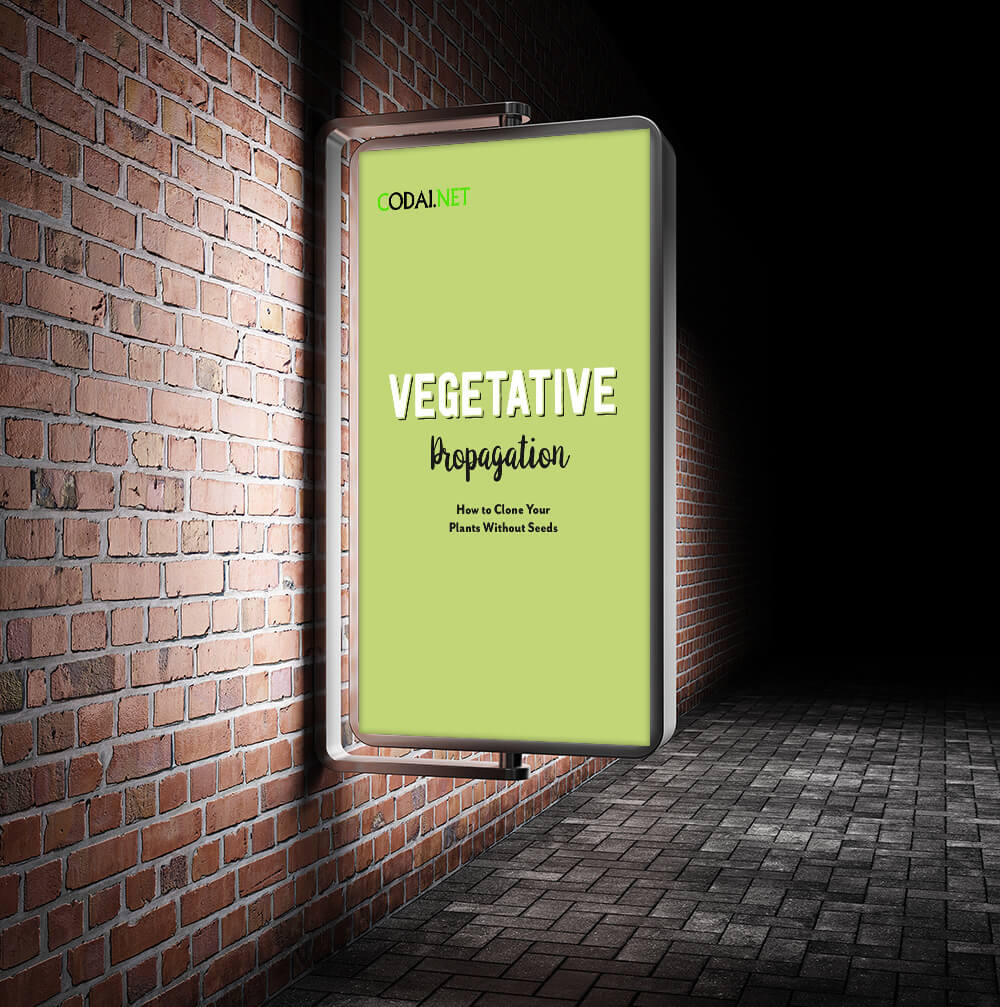Ebook Việt Hoá] Plant parenting: Easy ways to make more houseplants vegetables and flowers - LESLIE F. HALLECK
[Ebook Việt Hoá] Plant parenting – LESLIE F. HALLECK (Nhân giống cây) – WHERE TO START (Bắt đầu từ đâu)
- Nguồn: [Ebook Việt Hoá] Plant parenting: Easy ways to make more houseplants, vegetables, and flowers – LESLIE F. HALLECK (Nhân giống cây: Những cách dễ nhất để nhân giống cây cảnh trong nhà, rau và hoa)
- Biên tập: Dũng Cá Xinh (Tháng 08/20201)
- Dịch: Huyền Nguyễn
English
Different plants have varying requirements for how, where, and when to take cuttings, the ideal size of the cuttings, and how long they may take to root. Some plants, such as citrus or ivy, will root from stem and leaf-bud cuttings. You can propagate many tropicals, herbs, and perennials, such as pothos ivy and salvia, by placing a plant stem cutting in water for a few weeks. Many succulents will root from stem cuttings, but also can root from a single leaf (whole-leaf cutting). Some plants, such as peperomia, begonia, and African violets, will root from a leaf with a section of petiole attached (leaf-petiole cutting), and can also root straight from the leaf veins (non-petiole/split-vein cutting).
Some plants have evolved to produce small plant- lets, or offsets (pups), that grow and develop their own root system while still attached to the mother plant. Many perennials are propagated by taking root cuttings or divisions. Some plants, such as citrus, will even produce asexual seeds that are clones of the parent plant. These clone seeds are essentially a type of vegetative reproduction. Clearly, you must get to know a few things about the plant you want to clone before you get started.
When taking cuttings, be sure to start with a vigorous, healthy mother plant that has characteristics you want to replicate. The overall health and nutrient levels of the mother plant will have a big impact on
the success of your cuttings. Only take cuttings from plants that are insect- and disease-free, and that don’t show any nutrient or moisture stress. Also avoid taking cuttings of tissue with flowers. New cuttings need to establish a good root system before pushing out new leafy growth that they are not mature enough yet to support. Cuttings tend to root better and take off faster if the mother plant has high levels of carbohydrates and less nitrogen—stop fertilizing your mother plant with nitrogen for about a week before you take cut- tings. Cuttings from younger plants tend to be more successful than cuttings taken from older more mature plants. Sometimes cuttings from lateral shoots will root better than those taken from terminal shoots.
Something else to consider is that different plants root better depending on the age of the growth.
- SOFTWOOD CUTTINGS Cuttings taken from the soft, new tip growth of annuals, herbs, perennials and some woody plants, such as pothos ivy, basil, verbena, pelargonium, and hydrangeas, and many tropical houseplants, before it matures and hardens.
- SEMI-HARDWOOD CUTTINGS Cuttings taken from semi-mature sections of the current season’s growth on plants such as rosemary, citrus, English ivy, and camellias; the tissue is still flexible but beginning to stiffen.
- HARDWOOD CUTTINGS Cuttings taken from dormant sections of mature stems of shrubs and trees, such as hollies and junipers, in the late fall or winter. There is no active growth on these cuttings and they are harder stems.
The time of year you take cuttings from certain plants can influence their success. It’s usually better to take stem cuttings from plants when they are most actively growing. For many plants in your outside garden, the prime time to take cuttings is spring, early summer, or early fall. Early morning is the best time of day as your plant is usually fully turgid (full of water). The key is to be efficient and take advantage of what the plant has already grown and developed. For example, when you take a stem or leaf-bud cutting, the tissue will only need to develop new adventitious roots, as the cutting already has pre-existing shoot tis- sue. Offsets and runners already have adventitious root systems, and so can be very quick and easy to propagate. When you divide plants at the root zone, you’re essentially separating a new complete plant—it will just need a little time to grow some new root tissue. A root cutting or a leaf cutting, on the other hand, must initiate both new adventitious roots and a new adventitious shoot; that means they will take longer to form new plants than stem and leaf-bud cuttings, offsets, and divisions.
Some species of plants are not easy to clone vegetatively. Certain pome fruits, such as peach, apple, pear, and cherry, as well as other woody plants, don’t root well from cuttings. They are typically propagated by grafting and budding, which are more advanced propagation techniques not covered within the scope of this book. Such plants can be challenging for beginner propagators. Plants such as irises cannot be propagated from leaf cuttings, but you can easily divide their rhizomes. In this chapter, we’ll cover the basic methods of vegetative propagation to get you started with a variety of common plants.
You will find there is some overlap between the following vegetative propagation categories, because some plants have multiple ways they can be propagated. Even so, I’ve broken them down into a few simple categories to help you learn plant cloning step-by-step.



Tiếng Việt
Các loại cây khác nhau có các yêu cầu khác nhau về cách thức, địa điểm và thời điểm giâm cành, kích thước lý tưởng của cành giâm và thời gian để chúng ra rễ. Một số cây, chẳng hạn như Cam Quýt (citrus) hoặc Thường Xuân (ivy), sẽ ra rễ từ cành giâm cành và chồi lá. Bạn có thể nhân giống nhiều loại cây nhiệt đới, thảo mộc và cây lâu năm, chẳng hạn như cây Thường Xuân (ivy) và cây Xô Thơm (salvia), bằng cách đặt cành giâm vào nước trong vài tuần. Nhiều loài mọng nước sẽ ra rễ từ cành giâm, nhưng cũng có thể mọc rễ từ một lá (giâm cả lá). Một số cây, chẳng hạn như cây Trường Sinh (peperomia), Thu Hải Đường (begonia) và hoa Violet Châu Phi (African Violet), sẽ ra rễ từ một chiếc lá có cuống lá (giâm cuống lá), và cũng có thể mọc rễ thẳng từ gân lá (giâm không cuống / giâm gân lá).
Một số cây đã tiến hóa và tạo ra những cây nhỏ, hoặc những cây con (cây non), sinh trưởng và phát triển hệ thống rễ của riêng chúng trong khi vẫn gắn liền với cây mẹ. Nhiều cây lâu năm được nhân giống bằng cách giâm cành hoặc tách gốc. Một số cây, chẳng hạn như Cam Quýt (citrus), thậm chí sẽ tạo ra hạt vô tính, nảy thành cây vô tính của cây mẹ. Những hạt vô tính này thực chất là một kiểu sinh sản sinh dưỡng. Và tất nhiên, bạn phải biết một số điều về loại cây bạn muốn nhân giống trước khi bắt đầu.
Khi giâm cành, hãy chọn cành giâm từ cây mẹ khỏe mạnh, có những đặc điểm mà bạn muốn nhân rộng. Sức khỏe tổng thể và mức độ dinh dưỡng của cây mẹ sẽ có ảnh hưởng lớn đến sự thành công của việc giâm cành. Chỉ lấy cành giâm từ những cây không bị sâu bệnh và không gặp vấn đề về dinh dưỡng hoặc độ ẩm. Cũng tránh lấy các mô giâm cành có hoa. Các cành giâm mới cần phát triển một bộ rễ tốt trước khi thúc đẩy các lá mới phát triển nên chúng chưa đủ trưởng thành để hỗ trợ hoa phát triển. Các cành giâm thường ra rễ tốt hơn và nhanh hơn nếu cây mẹ có hàm lượng cacbohydrat cao và ít nitơ, hãy ngừng bón phân đạm cho cây mẹ trong khoảng một tuần trước khi bạn cắt cành giâm. Việc giâm cành từ những cây non dễ thành công hơn những cành giâm từ những cây già và trưởng thành hơn. Đôi khi cành giâm từ chồi bên sẽ ra rễ tốt hơn cành giâm từ chồi cuối.
Một điều khác cần xem xét là các loại cây khác nhau ra rễ tốt hơn tùy thuộc vào độ tuổi sinh trưởng.
- GIÂM CÀNH CÂY GỖ MỀM: Các cành giâm được lấy từ chồi mới, mềm của cây hàng năm, các loại thảo mộc, cây lâu năm và một số cây thân gỗ, chẳng hạn như cây Thường Xuân (ivy), Húng Quế (basil), cỏ Roi Ngựa (pelargonium), cây Thiên Trúc Quỳ (pargonium), và hoa Cẩm Tú Cầu (Hydrangeas), và nhiều loại cây nhiệt đới trồng trong nhà, và giâm trước khi nó trưởng thành và cứng lại.
- GIÂM CÀNH CÂY GỖ CỨNG VỪA PHẢI: Các cành giâm được lấy từ các phần bán trưởng thành của các cây như Hương Thảo (rosemary), Cam Quýt (citrus), Thường Xuân Anh (English ivy) và hoa Trà (camellias). Mô trên những cành giâm này vẫn còn mềm dẻo nhưng đang bắt đầu cứng lại.
- GIÂM CÀNH CÂY GỖ CỨNG: Các cành giâm được lấy từ các đoạn thân già, dừng phát triển trên thân cây bụi và cây trưởng thành, chẳng hạn như cây Holly và cây Bách Xù (juniper), vào cuối mùa thu hoặc mùa đông. Trên những cành giâm này không có sự phát triển và chúng là những thân cây cứng.
Thời điểm bạn giâm cành từ một số cây nhất định có thể ảnh hưởng đến sự thành công của quá trình giâm cành. Tốt hơn hết bạn nên giâm cành khi cây đang phát triển tích cực nhất. Đối với nhiều cây trong khu vườn ngoài trời, thời điểm chính để giâm cành là mùa xuân, đầu mùa hè hoặc đầu mùa thu. Sáng sớm là thời điểm tốt nhất trong ngày vì cây thường hoàn toàn có màu xanh và đầy nước. Điều quan trọng là phải thực hiện hiệu quả và tận dụng những gì cây trồng đã sinh trưởng và phát triển. Ví dụ, khi bạn giâm cành thân hoặc chồi lá, mô sẽ chỉ cần phát triển các rễ phụ mới, vì cành giâm đã có sẵn chồi từ trước. Chồi đã có hệ thống gốc ngẫu nhiên, và do đó có thể rất nhanh chóng và dễ dàng để nhân giống. Khi bạn tách các cây con ở vùng rễ, về cơ bản bạn đang tách một cây hoàn chỉnh mới, sẽ chỉ cần một ít thời gian để cây con phát triển một số mô rễ mới. Mặt khác, việc giâm rễ hoặc giâm lá phải tạo ra cả rễ mới và chồi mới, nghĩa là loại cành giâm này sẽ mất nhiều thời gian hơn để hình thành cây mới so với việc giâm cành, chiết cành và tách thân và chồi lá.
Một số loài thực vật không dễ để nhân giống. Một số loại cây ăn trái, chẳng hạn như Đào (peach), Táo (apple), Lê (pear) và Anh Đào (cherry), cũng như các cây thân gỗ khác, không bén rễ tốt khi giâm cành. Chúng thường được nhân giống bằng cách ghép và tách chồi (đây là những kỹ thuật nhân giống tiên tiến hơn không được đề cập trong cuốn sách này). Những cây như vậy có thể là một thách thức đối với những người mới bắt đầu nhân giống. Những cây như Diên Vĩ (irise) không thể được nhân giống từ cành giâm lá, nhưng bạn có thể dễ dàng tách thân rễ của chúng. Trong chương này, chúng tôi sẽ đề cập đến các phương pháp nhân giống sinh dưỡng cơ bản để giúp bạn bắt đầu nhân giống nhiều loại cây thông thường.
Bạn sẽ thấy có một số trùng lặp giữa các cách nhân giống sinh dưỡng sau đây, bởi vì một số loài thực vật có nhiều cách nhân giống. Mặc dù vậy, tôi đã chia thành một vài danh mục đơn giản để giúp bạn tìm hiểu về nhân giống thực vật từng bước.






